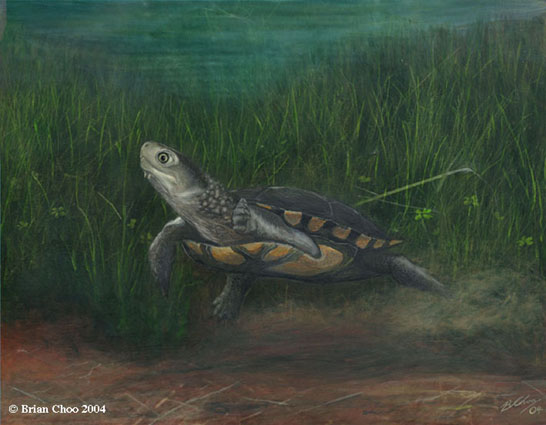In a pond in Twin Swamps Reserve, a western swamp tortoise
goes about her business, oblivious to the dire perils that are facing her
species. The western swamp tortoise (Pseudemydura umbrina) is Australia's
most critically endangered reptile. It makes its home in temporary wetlands
in the Swan Valley, north of Perth, Western Australia. They are active
in winter, feeding on small aquatic arthropods in shallow ponds. When the
ponds dry out during the summer, the reptiles aestivate in cracks in the
clay or under vegetation.
Thanks to a concerted conservation effort, there are about 500 tortoises
alive today (200 in captivity at Perth zoo), up from a low of about 30 in
the mid-1960s. With specialised requirements for ephemeral swampland, this
species already had a highly restricted distribution before European settlement
and most of their former habitat has been drained and developed. Other threats
include predation by introduced foxes and a pronounced drop in regional rainfall
since the 1970s.
Note: in Australia a "turtle" refers to any flippered, fully-aquatic chelonian
(ie. sea turtles and the pig-nosed
Carettochelys) while "tortoises"
are freshwater semiaquatic chelonians of the family Chelidae. There
are no terrestrial testudinid tortoises in the classical European sense.
 See real western swamp tortoise hatchlings!
See real western swamp tortoise hatchlings!
 Back to main page
Art and text © Brian Choo 2004
Back to main page
Art and text © Brian Choo 2004

